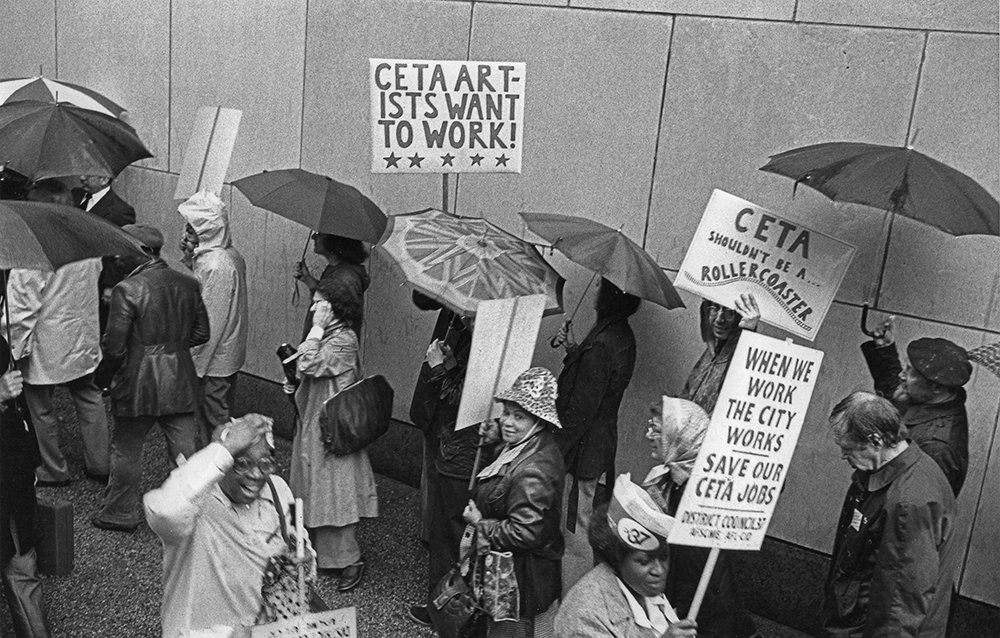
CETA
Comprehensive Employment and Training Act
In existence from 1973 to 1982, the Federal Comprehensive Employment and Training Act (CETA) was perhaps the most significant, if accidental, post-war government effort to create paid employment opportunities for arts and humanities workers. Providing jobs to nearly 20,000 artists and cultural workers, CETA created more professional positions for the arts community than any other government program since the Works Progress Administration (WPA) (1935-1943).
While not originally intended to support artists, CETA nonetheless nurtured a diverse cultural workforce and launched the careers of now-prominent artists and administrators, while paving the way for others to use their skills and experience in arts-adjacent fields or transfer them to other sectors. Through CETA, painters, muralists, ceramists, photographers, filmmakers, architects, poets, folklorists, playwrights, community historians, curators, librarians, archaeologists, musicians, dancers, actors, theatrical technicians, and horticulturalists fulfilled thousands of community assignments around the nation. They provided art services and engagement to thousands of local residents, created hundreds of public artworks, mounted exhibitions, historic preservation, and archiving projects, led therapeutic arts and arts education programs, and produced scores of musical, dance, and theatrical performances that were free to the public. Participants credit CETA with launching their careers, opening a diverse range of employment opportunities for cultural workers, and having a significant impact on national as well as city and state-level cultural ecologies.
Pan-sector CETA demonstration in Times Square, 1979. Photo: Sarah Wells.
Contact Us.
Hello, we would love to hear from you! Please feel free to reach out if you would like to collaborate, learn more about this project, or share your own CETA history.
